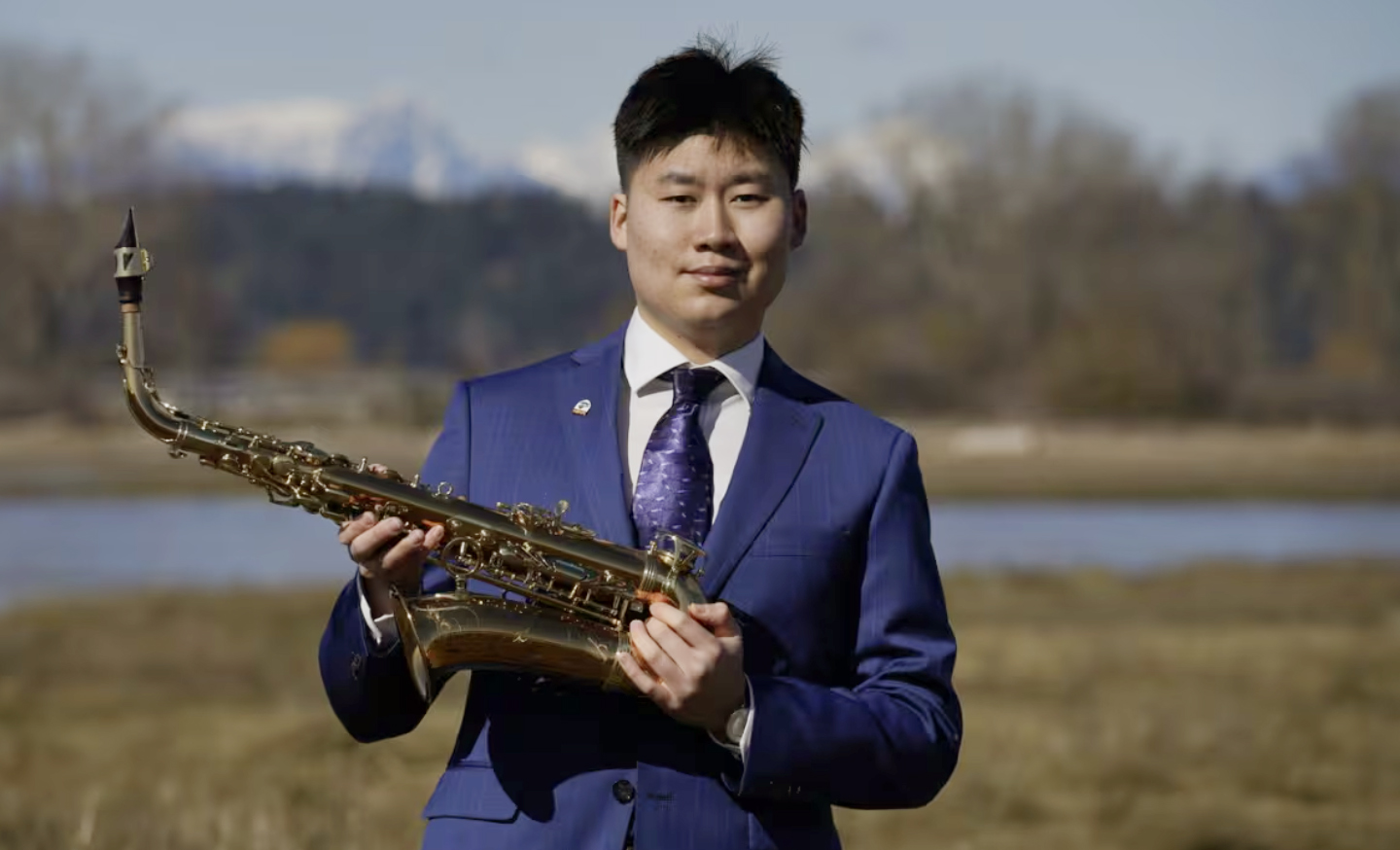
Marina Thibeault
By Marina Thibeault
Assistant Professor of Viola
Healthy thinking, healthy playing
Anxiety is a major issue in our modern society. Various treatments are available (e.g. psychopharmacology, cognitive therapy, etc.), but those options do not come from inside ourselves – they are costly and often time-consuming. Giving music students and professional musicians the autonomy to cultivate mindfulness is a path to be explored.
What is meditation? It sounds New Age
Mindfulness meditation promotes the balance between a relaxed and aware state. The practice cultivates awareness, consciousness, positive thinking, and changes negative patterns in the mind to increase contentment and give access to our best self.
“What you think, you become.What you feel, you attract.What you imagine, you create.”
One might have heard of the spiritual and transcendental effects of meditation, but apart from those, meditation also works on a scientific level.
What are the benefits of meditation? Are they physical or psychological?
Meditation has been shown to
- improve concentration and mood
- reduce stress and regulate emotions
- reduce anxieties, fatigue, depression, tension, anger and confusion.
- increase in focal capacity, cultivating positive emotions and controlling actions which support the development of virtue, concentration, and wisdom
- regulate one’s own emotions, which brings cognitive improvements in sustained attention, visuospatial processing, and working memory.
Aren’t those enviable qualities in a musician?
Meditation changes your brain. What does this mean?
- Meditation not only changes your brain, but also your mind!
- It increases the left-sided anterior activation of your brain, which helps reduce anxiety and negative affect, increases in positive affect, regulates emotions, facilitates adaptation to negative and/or stressful events and shows faster recovery after a negative event.
- There is clear plasticity in anterior activation asymmetry and brain activity to specific emotional challenges. The left side of the frontal lobes becomes more active compared to the right side. This is why you feel happier!
- Billions of synaptic connections are added (which thickens brain tissues). This affects primarily the regions handling control of attention and sensory awareness.
- It increases serotonin; the neurotransmitter that helps regulates mood and sleep. This is proven to cure depression.
Can meditation reduce music performance anxiety (MPA)?

Marina Thibeault
Over 2000 studies have been done showing the benefits of meditation for overcoming anxiety, depression, and improving concentration, mood, awareness, etc.
A study (Chang, 2001) has been conducted on the benefits of meditation for musicians. In this study, 19 music students (mostly pianists and not necessarily suffering from MPA) were randomly assigned to a meditation or control condition. Pre and post performance anxiety measures indicated very modest support for the role of meditation in reducing performance anxiety. Interestingly, there were no significant differences on measures of cognitive interference (mind wandering, intrusive thoughts). The small sample size may have obscured potentially significant effects and a larger study with a more intensive treatment intervention is needed to address this issue. Nevertheless, transposing the results of meditation in general researches is encouraging for the music field!
Is meditation beneficial to musicians?
The wellbeing of a performer’s body and mind is a topic receiving more attention nowadays. Expectations for performers are high – especially the ones we inflict on ourselves.
Being well prepared is perhaps the first step to overcoming music performance anxiety. Teachers are giving their students musical and technical tools for that purpose, but what about proper breathing and relaxation? What about healthy thinking and awareness?
Playing music is an act of concentration, extreme focus, and presence. Therefore, the cognitive preparation to overcome anxiety could be improved by the practice of mindfulness meditation.
As the Buddha said, “See for yourself.” This meditation practice has been helping people get through their lives for thousands of years.
Since my yoga teacher training at the Sivananda Ashram, I am thriving to bring mindful qualities into music making. Here are personal tips to put Buddha’s saying into practice in our musical highly stressful lives…
- Be present and take note of the changes in your meditation practice as well as in your music practice.
- Pay extra attention to the good things in the world and in yourself. For example:
- Notice things that start becoming more natural in your music making.
- Enjoy practicing compassion, patience, good listening and kindness to your colleagues.
- When you succeed at something, be happy about the steps that took you there and don’t just get attached to the result. As a mindfulness practice, focus on the sensations and the feelings in your positive experiences, since they are the pathway to emotional memory.
- Deliberately create positive experiences for yourself. Keep a journal of all the things that you are proud of and write it out at the end of your day.
I only have 20 minutes, should I practice or meditate?
Getting caught in the loop of “being too busy” to take care of oneself if not ideal… As the musician is becoming busier, serious care needs to be put in physical and psychological health. Healthy thinking: healthy playing!
One great thing about mindfulness is that you can practice it anywhere, doing anything.
“Are you too busy to meditate half an hour every morning? Then meditate for one hour.”
Let’s say you have to walk 20 minutes to school or work. Instead of letting the mind wander and think about your to-do list, count your steps. You might have to count over 2000 steps for a 20-minute walk. I have done the math! Make sure you do not get frustrated with yourself if you miscount or start thinking about something else for 5 minutes without realizing it. Simply start counting again and keep smiling.
Meditation is a tool available to help deal with stress. It shouldn’t become a source of stress! Eventually, on the days where time is very limited, you will not have to choose between meditation and music practice, as you develop mindfulness. Your music practice will be meditation!
Is meditation a suitable practice technique in today’s musician lifestyle? How do I fit meditation into my life?
One major characteristic of a musician’s life is its irregularity. One needs to realise that waking up at sunrise every morning to meditate might not always be possible. If meditation can already teach us something, it is flexibility and compassion towards ourselves. It is most likely that there will be a reception or a celebration of some sort after a concert. The social aspect of music-making, with colleagues, donors, and the audience is important. Therefore, the night meditation might be just scanning each part of the body and consciously relaxing each part to calm down the nervous system from the big adrenaline boost it just had! Musicians are also prone to constant travelling and some days start with very early flights. The morning meditation can be made while traveling, instead of right after rising up. If you feel that both morning and evening are impossible, then mediate in one of your practice breaks during your day!
Can I find my meditation elsewhere?
I recently attended the International Masterclasses at Prussia Cove where Thomas Riebl, the viola teacher, directed Qigong practice every morning. I went to practice every day at 8:30 am. Some days it didn’t feel convenient, as I had my lesson right after, or a rehearsal with piano, and I would have “preferred to warm-up”, but I never regretted starting the day with the practice of mindfulness. Of course, mindfulness can be practiced while doing various tasks, but at first, I personally believe it is important to practice it without the instrument.
To start with, I was skeptical about the idea of introducing students to a mindfulness practice at a festival. As it wasn’t mandatory, only the people who were interested attended. Over the ten days, the circle kept growing. Finally, most of the students who attended the Qigong practice said it increased their positive attitude, capacity of focusing while working, joy of playing, awareness of habits and problem-solving attitude. I would encourage other festivals and courses to offer a mindfulness practice. As yoga and the Alexander Technique require accessories (mats, chairs, etc.), I believe that meditation and other types of Zen practice such as Qigong or Tai-Chi for instance, could fit more easily in the schedule.
What type of meditation should I practice? What is the best meditation for me?
There are various types of meditation:
- Mantra Meditation or Transcendental Meditation: A silent practice that uses a mantra in Sanskrit (Om, Soham, Om namah sivaya). The mantra is given to the meditator by a teacher and is very personal and specific to the student. [5]
- Mindfulness-Based Stress Reduction: This technique uses both breath awareness and body scan. Breath awareness is as simple as it sounds. Focus is brought upon the inhalation and exhalation. Body scan is a process of focused attention on the physical body starting at the toes and moving up gradually. The technique is used to release tensions in the body. The practitioner may be seated, laying down, or walking depending on the focus of practice.
- Zazen: Coming from Zen Buddhism, this meditation style consists of observing the breath and the mind, and through interaction with a teacher.
I once experienced a ten-day meditation retreat at a Vipassana centre. The method used is called “The Art of Living”, by S. N. Goenka and is one of India’s most ancient techniques of meditation. The technique consists of these steps:
- Eyes closed, focusing on the air coming in and out of the nostrils.
- Focus on the full breath cycle (nostrils to abdomen and back).
- Focus on other body sensations that might occur during meditation.
Taking ten days off the map of the world for a meditation retreat might not be suitable for everyone. Nevertheless, studies have shown long-lasting results after only four days of meditation. Maybe it is worth considering!
There are tons of different mindfulness approaches. Here is an example of merging a breathing exercise and meditation together:
Breathe in such a way that your inhalation and exhalation are the same duration; for example, count 1-2-3-4 in your mind while inhaling and 1-2-3-4 while exhaling. At the same time, imagine or sense that you’re breathing in and out through the area of your choice (point between the eyebrows, heart or abdomen for instance). Meanwhile, bring to mind the feeling of gratitude, compassion, confidence or any virtue of your choice, which you wish to cultivate.
There are many different meditation approaches. You don’t need to be a Buddhist monk to experiment, and I invite you to make up your own!
Imagine the music world in which all your co-workers practiced meditation!


